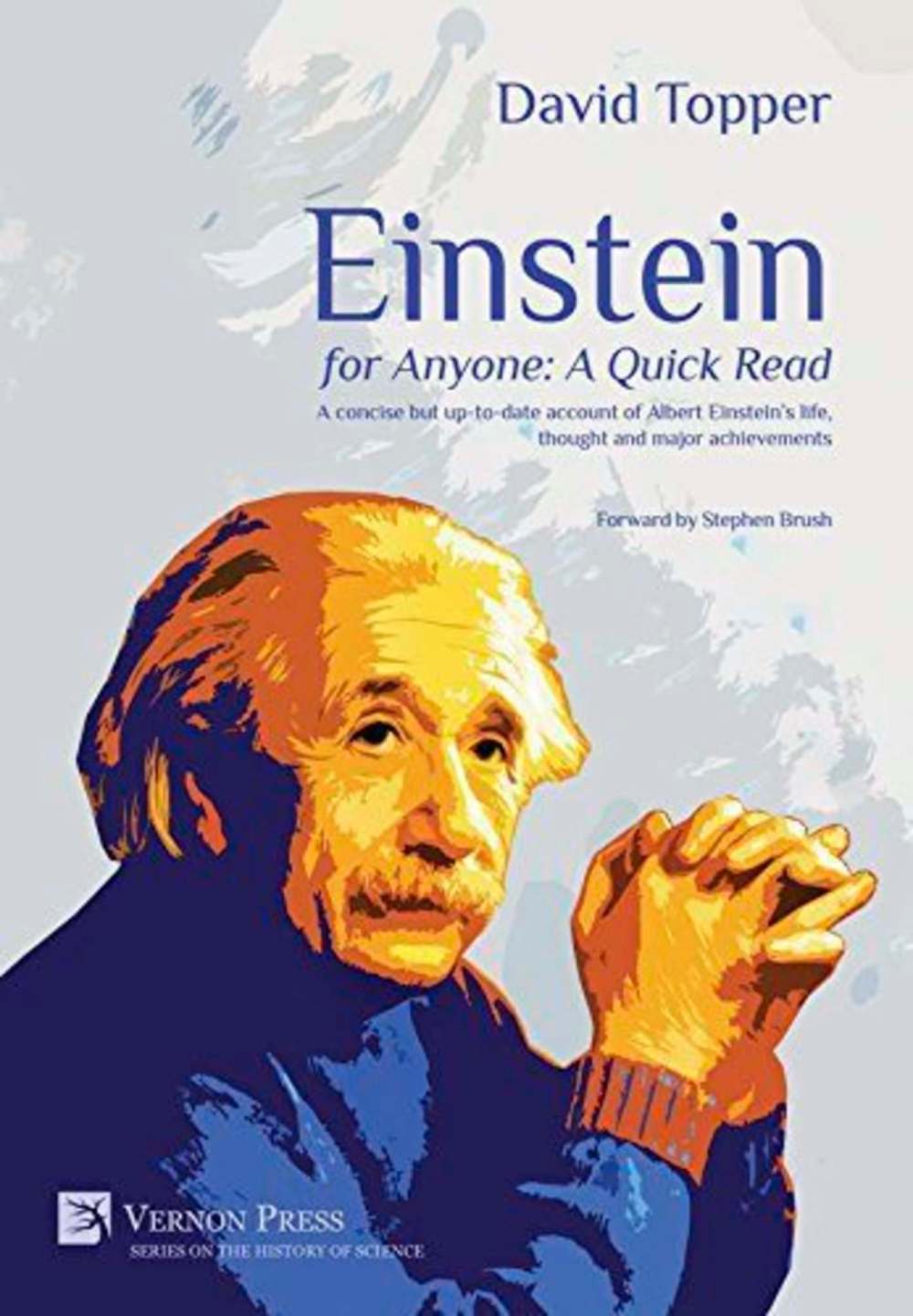Brief book on Albert Einstein a flawed, confusing equation
Advertisement
Read this article for free:
or
Already have an account? Log in here »
To continue reading, please subscribe:
Monthly Digital Subscription
$1 per week for 24 weeks*
- Enjoy unlimited reading on winnipegfreepress.com
- Read the E-Edition, our digital replica newspaper
- Access News Break, our award-winning app
- Play interactive puzzles
*Billed as $4.00 plus GST every four weeks. After 24 weeks, price increases to the regular rate of $19.00 plus GST every four weeks. Offer available to new and qualified returning subscribers only. Cancel any time.
Monthly Digital Subscription
$4.75/week*
- Enjoy unlimited reading on winnipegfreepress.com
- Read the E-Edition, our digital replica newspaper
- Access News Break, our award-winning app
- Play interactive puzzles
*Billed as $19 plus GST every four weeks. Cancel any time.
To continue reading, please subscribe:
Add Free Press access to your Brandon Sun subscription for only an additional
$1 for the first 4 weeks*
*Your next subscription payment will increase by $1.00 and you will be charged $16.99 plus GST for four weeks. After four weeks, your payment will increase to $23.99 plus GST every four weeks.
Read unlimited articles for free today:
or
Already have an account? Log in here »
Hey there, time traveller!
This article was published 11/06/2016 (3424 days ago), so information in it may no longer be current.
This book could have been a gem.
The concept is attractive: a book about Albert Einstein for the general reader that briefly explains the relationship between his life and his revolutionary theories of space and time.
The author would seem to be a good bet: David Topper, former history professor at the University of Winnipeg, has won teaching awards and has written three previous books on popular science topics, including a previous book on Einstein.

More than 60 years after his death, the subject is still engaging: a colourful scientist with a shock of white hair who was not afraid to challenge conventional wisdom in science and the larger society.
Topper concedes at the beginning and the end of his book there are hundreds of Einstein titles that are longer, more detailed or more specific about one aspect of his career or another. His case that the world needs a “concise, but up-to-date account” of Einstein’s “life, thought and major achievements,” rests on the notion the Twitter generation will not read such “door-stoppers” as Walter Isaacson’s 2007 best-seller, Einstein: His Life and Universe.
While Topper read it, he is certain “few of those buyers got into the over 600 pages before leaving it sitting unread on the night table.”
His premise is previous biographers have provided too much detail book-buyers, generally, aren’t that interested in reading. (Of note: the hardcover version of this book is prohibitively expensive.)
Even though the book is not aimed specifically at young readers, Topper uses his childhood thoughts on the nature of the universe to introduce complex concepts in physics. He even creates child-like drawings to illustrate his points. Unfortunately, the technique fails to deliver the basic understanding of Einstein’s theories Topper promised.
Topper dedicates one of the five chapters to Einstein’s supposed “chutzpah,” a Yiddish word meaning gutsiness. Readers may find Topper displays more chutzpah than Einstein when he describes, as a five-year-old, “How strange (or fascinating) is the realization that I was (sort of) thinking along similar lines as Einstein for the structure of the world. Gives me goose bumps.”
Topper is frequently distracted by other topics, which he excuses by introducing them with BTW (by the way).
At one point, he spends a paragraph of random thoughts on Malala Yousafzai, the activist for girls’ education who survived an assassination attempt, without even trying to relate her story to Einstein’s.
Even if the text, as written, had not been pretentious, self-centred and often trivial, the book would still be far from a gem. Topper’s disdain for other authors and his low estimate of readers’ intelligence is outdone by the sheer contempt the publisher demonstrates towards potential buyers of this book.
The definition of a reader, Vernon Press, is one who is able to read.
While there is an old saw about not being able to tell the book from its cover, this cover actually tells a lot about what is inside. The blurb contains no fewer than six errors in four brief paragraphs: a non-sentence, a missing word, a misused hyphen and three misspellings.
Some of the bad editing results in confused meanings that leave the reader perplexed: woman instead of women; physiological instead of psychological; self-identify instead of self-identity.
Remember, the reader has yet to open the book.
Inside, at least 52 of the 75 pages of text have similar errors, sometimes two or three to a page. The worst of the worst: 1987 instead of 1897; redshirt instead of redshift; Scotchman instead of Scotsman; and Noble Prize instead of Nobel Prize no fewer than three times in a book about someone who won one.
The author needed an editor who could shape the text to focus on Einstein, not himself. The publisher’s failure to employ an editor who could read and write turned this potential gem into a lump of coal.
Donald Benham is the manager of hunger and poverty awareness at Winnipeg Harvest.

